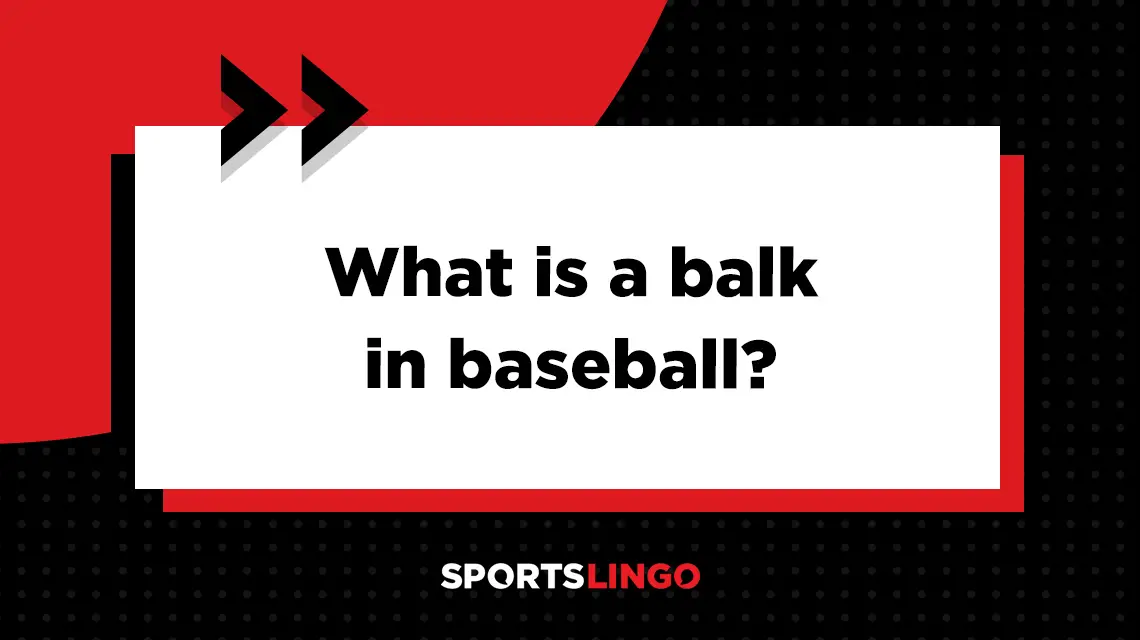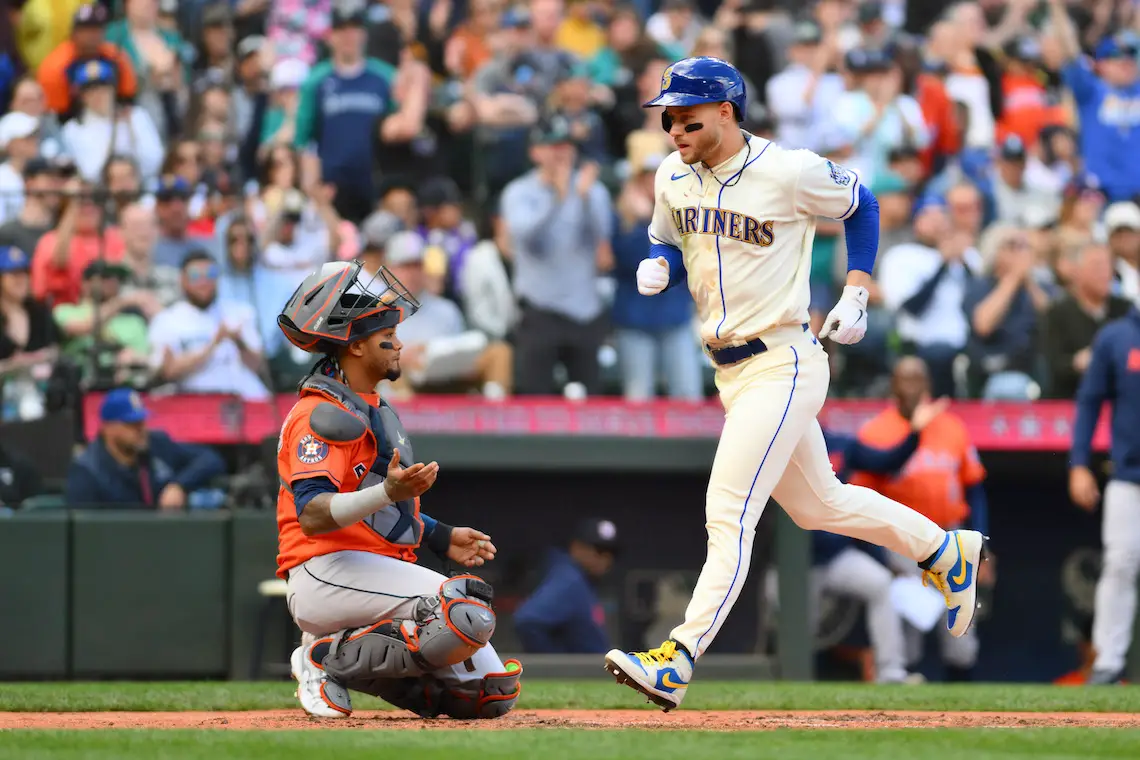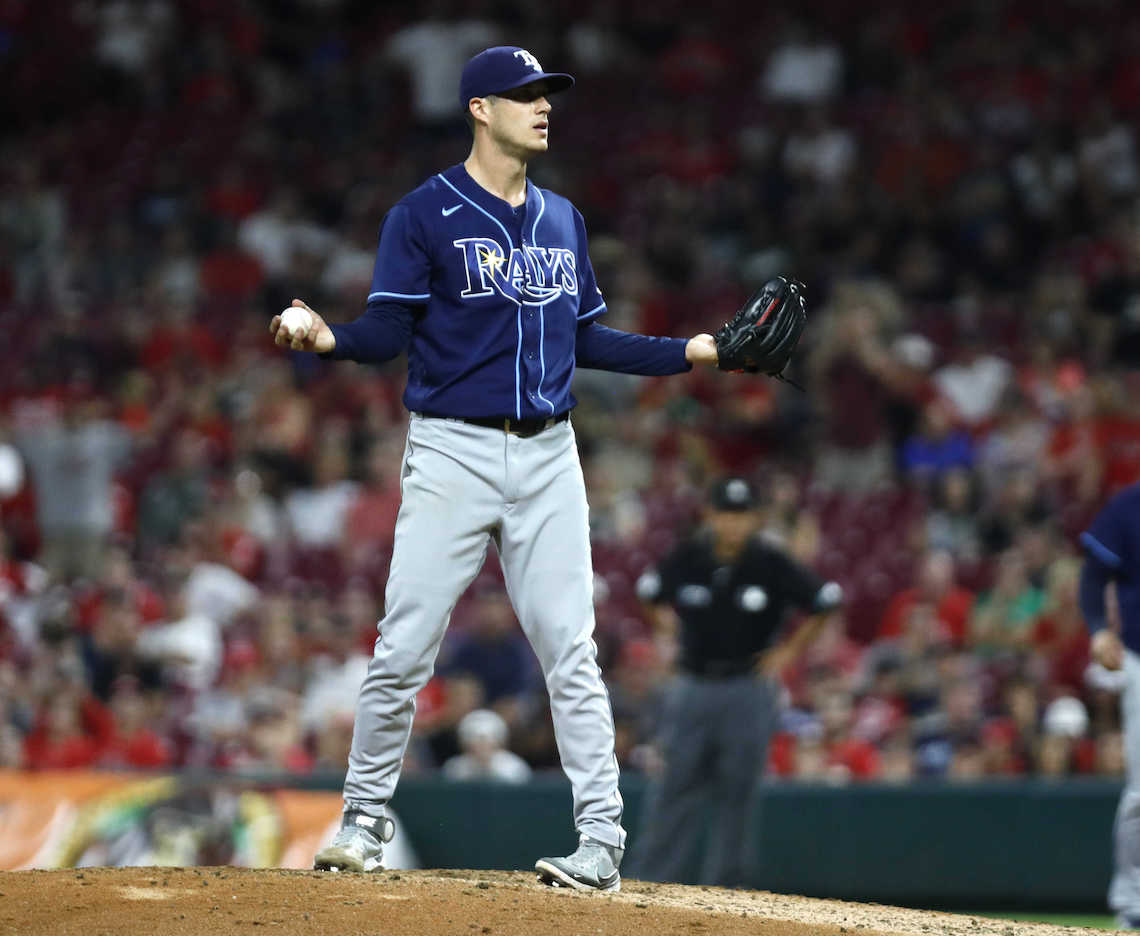
balk
What is the definition of a balk In baseball?
1. A balk is an illegal move performed by the pitcher before they pitch the ball. Balks are moves that intentionally deceive a hitter or runner in an effort to give the pitcher and fielders an advantage in the game.
When a pitcher performs a balk, each baserunner is allowed to advance one base. There must be at least one baserunner on base for a balk to be called by the umpire.
What does balking in baseball mean?
If a pitcher is balking, it means that they’re trying to deceive the batter or baserunner. According to the rulebook, balking is illegal in baseball. However, pitchers who are often called for balking tend to make lots of successful pickoffs in games. This is usually because their pickoff moves to first base border on being illegal, which makes them particularly misleading to baserunners.
What makes a balk in baseball?
A balk can only be called when there is at least one runner on base. The balk rule states that when a pitcher is on the rubber on the pitcher’s mound and they perform a move that is naturally associated with their delivery, but do not actually deliver the ball, they will be called for a balk.
What is a balk in baseball?
Some examples of balks in baseball games include:
- A pitcher fakes or attempts a throw to first base or third base, but does not complete the throw.
- A pitcher raises their free foot and it goes back over the pitching rubber, but the pitcher does not deliver the ball to home plate or go fully around to second base and complete the throw to the base.
- A pitcher raises their free foot, but makes no pitch and brings it back down.
- A pitcher moves their shoulders after they’ve become set, but does not deliver the ball.
- A pitcher does not come to a complete stop, or set, before delivering the ball to the plate. The pitcher cannot attempt to do a quick pitch or quick return on a batter. Before delivering a pitch, the pitcher’s body must be completely still, except for his head.
- A pitcher switches from the windup position to the set without stepping off the rubber.
- A pitcher brings their hands together while on the rubber, but then separates their hands without delivering a pitch or making a throw.
- A pitcher stands on the pitcher’s plate without the ball or feints a pitch without the ball.
- A pitcher throws from the mound to a base without taking a step in the direction of that base.
- A pitcher feints a throw from the rubber to an unoccupied base without an imminent play already in motion.
- A pitcher drops the ball while on the rubber. Even if this occurs by accident, it still counts as a balk.
There are some relatively new additions to the list of potential actions that would elicit a balk call, including:
- In the past, a pitcher was allowed to fake a throw to third and then to first base, if there were runners on first base and third base. However in 2013, the fake to third move was made illegal and is now considered a balk.
- The pace-of-play baseball rules added in the 2023 season state that a pitcher will get a balk call if they make more than two pickoff attempts in a single at-bat when no out is recorded and no runner advances.
The rules for the National Federation of State High School Associations (NFHS) state consider some additional actions to be balks, including:
- A pitcher feints toward the batter or first base.
- A pitcher makes an illegal pitch from any position.
- A pitcher fails to use a continuous pitching motion when delivering the ball to a batter.
- A pitcher fails to step toward a base with their non-pivot foot when throwing or feinting to that base.

Steven Bisig/USA TODAY Sports
How can pitchers avoid balking?
To avoid a balk call, a pitcher must reach the set position by coming to a complete stop with their body and bringing their hands together before they begin their motion toward the batter’s box. Then, they must complete a fluid motion for their windup and pitching delivery.
The way a pitcher must turn to throw the ball to first base depends on which hand they pitch with. A right-handed pitcher or “righty” faces toward third base, so they must step off of the pitching rubber to throw to first. For a left-handed pitcher or “lefty,” they already face first base when setting up in a pitching position. This means that once they raise their right foot, they must bring it down in a direction facing where they are aiming (either home plate or first base).
Can you fake a throw to first as a pitcher?
When there is a runner on base, a pitcher may not fake a throw to first, otherwise it will be called a balk. However, there is one movement that a pitcher may do if they would like to reset and/or look at the runner at first base.
If the pitcher does not feel comfortable throwing the pitch, they must step off the rubber and directly backwards with the foot that is rested against it. The pitcher cannot make any throwing motion toward first base, otherwise they must deliver the ball to the first baseman. If they do not, then it is a balk. If the pitcher steps to the side of the rubber with the foot that is resting against it, they must also deliver the ball to the infielder at first base, otherwise it is a balk.
What is the punishment for balking in baseball?
If a pitcher balks with runners on base, each baserunner is allowed to advance to the next base. This is known as free advancement when called on the field. When a pitch is thrown as part of a balk, it is considered a dead ball.
If a pitcher commits a balk when there are no runners on base, usually no penalties are called. Some moves which are considered balks when runners are on base, such as attempting to pitch the ball before the batter is ready or pitching off of the rubber, will usually result in the pitch being called as a ball if no runners are on base.
Why is balking illegal in baseball?
The balk rule is in place to help create a fair playing field between the pitcher and the batters and baserunners. If the balk rule did not exist, pitchers would be allowed to deceive baserunners and hitters by faking deliveries to home plate, putting illegal substances on the ball for additional movement and committing other illegal actions that are in favor of the pitcher and the fielding team.
Prior to balking becoming illegal in baseball, baseball players had to be very conservative as baserunners. The enforcement of legal pitching made it possible for baserunners to take more chances when it comes to stealing bases and leading off a on base prior to a hit.
Is a baseball balk an error?
Although a balk is an illegal action, it is not counted as an error in baseball statistics. An error, in short, is a misplay on a ball in play that allows a baserunner to advance. The balk definition states that it is an illegal infraction of the rules of the game.
What is an intentional balk?
An intentional balk is a baseball strategy in which a pitcher will purposefully balk in order to advance a runner on second base to third base. The purpose of an intentional balk is to prevent the batting team from stealing signs, as the view from second base gives baserunners the most direct look at the signs the catcher is giving to pitchers and coaches.
Intentional balking is rare in baseball. In addition, it has become somewhat obsolete since 2022, when the MLB introduced a wireless communication system called PitchCom which can be used in the place of visible signs from the catcher’s box.

David Kohl-USA TODAY Sports
When did balks become illegal in the MLB?
The balk rule was introduced to Major League Baseball (MLB) in 1898. Originally, this rule simply required that pitchers must throw to a base if they make a motion to do so. The rule was updated a few times in the following decades, including a notable crackdown on balks in the National League during the 1963 season.
The Year of the Balk occurred in 1988 when the MLB rules were updated to require pitchers to come to a complete stop with both feet on the ground prior to pitching. This change was difficult for pitchers to adjust to, and it became one of the most common balk calls that year. While the number of balks shot up during the 1988 season, the following seasons featured far fewer balk calls.
Who has the most career balks in the MLB?
The baseball player with the most balks in their MLB career is Steve Carlton. He had a total of 90 balks during his career from 1965 to 1988.
Despite his high number of balks, Carlton was a very accomplished MLB pitcher. He won four Cy Young Awards and the 1980 World Series while playing for the Philadelphia Phillies. He also picked 144 runners off base during his career, which is far more than any other pitcher since the statistic began being tracked in 1957.
Who had the most balks in a season in the MLB?
Dave Stewart holds the record for the most balks in one season. In 1988, he had a total of 16 balks while pitching for the Oakland Athletics.
Who had the most balks in a game in the MLB?
Bob Shaw holds the record for the most balks in a single game with total of five. This record was set on May 4, 1963 while Shaw was pitching for the Milwaukee Braves in a matchup against the Chicago Cubs.
The game occurred shortly after the National League encouraged strict enforcement on balks. Shaw’s balks mostly involved failing to come to a complete stop with his hands together in the set position before delivering a pitch, an illegal move which had been largely overlooked prior to that season.
Memorable balks in MLB history
There have been a number of notable balks in the MLB, including:
- 1947: Pitcher Spec Shea dropped the ball during his attempt to pick off Jackie Robinson at first base during a World Series game between the New York Yankees and Brooklyn Dodgers.
- 1961: A strong gust of wind caused pitcher Stu Miller to sway on the pitcher’s mound and draw a balk call during a Major League Baseball All-Star Game.
- 2015: While playing as a relief pitcher for the Texas Rangers, Keone Kela’s balk in the bottom of the ninth inning led to a walk-off balk (or “balk-off”), advancing Enrique Hernández of the Los Angeles Dodgers from third base to home to score the game-winning run.
- 2019: While pitching as a closer for the Los Angeles Dodgers, Kenley Jansen made an intentional balk to prevent Cubs player Jason Heyward from stealing signs on second base.
Examples of how balk is used in commentary
1. As you can see, after coming to the set position, Schilling separates his hands but does not go to the plate with the ball. Because of this, he’s called for a balk and the runner is allowed to advance to second base.
Sport the term is used
1. Baseball
Abbreviated as:
1. BK